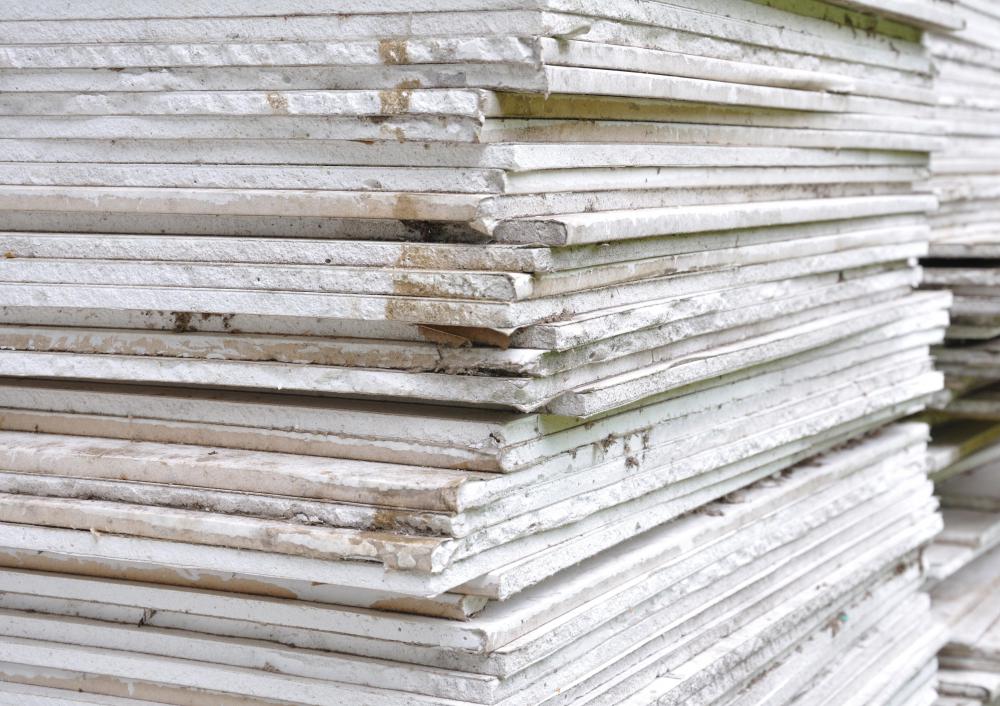At WiseGEEK, we're committed to delivering accurate, trustworthy information. Our expert-authored content is rigorously fact-checked and sourced from credible authorities. Discover how we uphold the highest standards in providing you with reliable knowledge.
What are the Best Tips for Drywall Finishing?
Once new drywall has been hung, it is time to move on to drywall finishing. An experienced handyperson can finish a mid-sized room full of drywall in about two hours, while it may take a novice twice that time. All that is needed is some drywall tape or joint tape, joint compound, sanding mesh or 200-grit sandpaper, drywall knives and a pole sander. Drywall finishing is the process of taping and adding joint compound to the seams between the sheets of drywall. There are many helpful hints and tricks of the trade that will make any home drywall finishing project appear professional.
Drywall finishing can be a bit time-consuming, since to do it properly, it is a three-coat process and each coat should dry for 24 hours before the next coat is applied. When the first coat of joint compound is spread along the seams of the drywall it should be about six inches (15.2 cm) wide. Consequently, it is best to use a six inch (15.2 cm) knife. The knife will spread the compound best if the edges are rounded so it will not cut into the drywall. Then, the drywall tape is placed over the compound to prevent cracking and to hide the seams.

With drywall finishing, the drywall tape can be either paper or fiberglass mesh. If it is fiberglass, it will stick on its own and is relatively easy to work with. Fiberglass tape is meant to be used with a strong, quick-drying compound that is made from a powder. Because the quick-drying, powder-based joint compound is complicated to use, people who are new to drywall finishing should stick with a pre-mixed joint compound and use paper drywall tape. In addition, the tape should be applied as a single piece and should be pushed into the compound every 12 inches (30.5 cm) to prevent it from slipping and wrinkling.

When applying the first coat of joint compound, be sure and cover any screws or nails in the drywall. It is also a good time to coat the corners with a thin layer of compound. Paper tape is easiest to use for the corners, as well. Simply fold a strip of paper tape in half, position it at the top of the corner joint and press it into the wet joint compound every 12 inches (30.5 cm) or so. Lastly, pull the knife down the wall, smoothing the tape. This motion will let the tape in the corner lay flat and will remove any excess joint compound.

The second coat of joint compound is spread a little wider than the first coat. It should cover the first coat of joint compound and the drywall tape to further hide the seams; however, it should also feather out into the drywall. The second coat should be applied only after the first coat has had a chance to dry overnight. An eight inch (20.3 cm) drywall knife should be used for this coat. In addition, a second coat of joint compound can be applied over the nails and screws and a second coat of compound can be added to the corners in the same manner as the first coat.

The third coat of compound should be applied so that it is about 12 inches (30.5 cm) wide and should be smeared out so it gradually blends into the drywall. It is best if the compound is slightly watered down or if a special finish-coat joint compound is used. It too can be applied to the screws, nails, seams, and corners with a 12 inch (30.5 cm) knife. It is important the edges of the wet compound feather out until they blend perfectly with the drywall. Once this coat has dried, any flaws can be smoothed with a damp sponge or can be sanded with sanding mesh or 220-grit sandpaper.

On a final note, if high areas, such as ceilings, need to be sanded, use a poll sander. It is a pole with a pad on the end to hold the sandpaper. Simply hold it up to the ceiling and run it along the seams on the ceiling. Follow these helpful hints and drywall finishing can be something anyone can do.
AS FEATURED ON:
AS FEATURED ON:















Discuss this Article
Post your comments